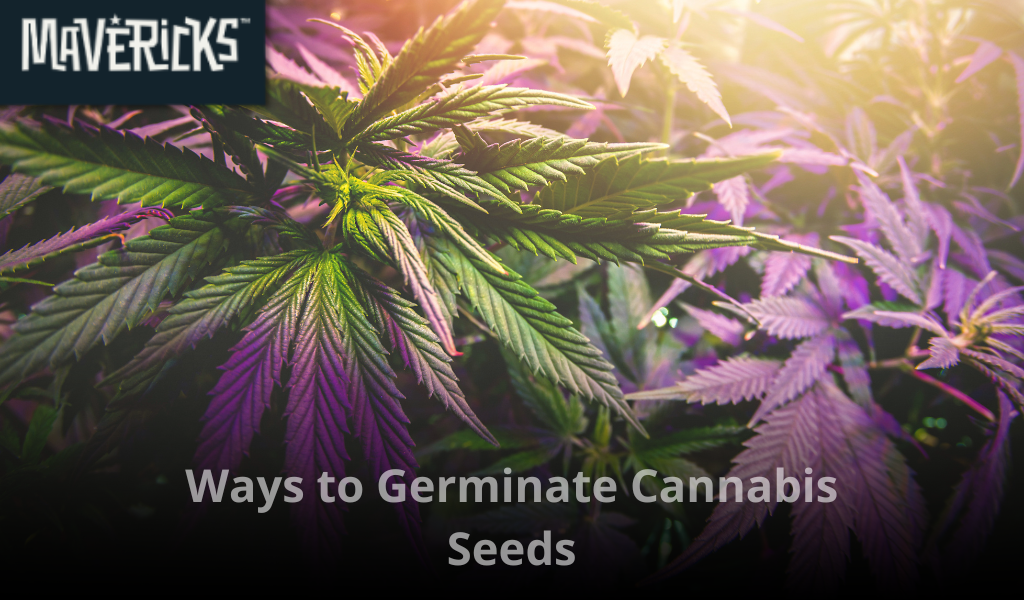Germinating cannabis seeds is the first critical step in cultivating healthy and productive plants. Choosing the right germination method can significantly impact the success rate and vigor of your seedlings. This guide explores various effective techniques to germinate cannabis seeds, helping you select the best approach for your cultivation needs. Looking for high-quality seeds? Visit our feminized cannabis seeds collection to get started.
1. Paper Towel Method
Overview:
The paper towel method is a popular and straightforward technique that allows for easy monitoring of seed germination.
Steps:
-
Moisten two clean paper towels with distilled water.
-
Place the cannabis seeds between the two damp towels.
-
Insert the towels into a plastic zip-lock bag or between two plates to maintain moisture.
-
Store in a warm, dark place (70–85°F or 21–29°C).
-
Check daily for sprouting, ensuring the towels remain moist.
Pros:
-
Easy to monitor seed progress.
-
Cost-effective and requires minimal materials.
Cons:
-
Handling sprouted seeds can be delicate, risking root damage.
-
Seeds may dry out if not monitored closely.
2. Direct Soil Planting
Overview:
Planting seeds directly into the soil mimics natural germination conditions and reduces transplant shock.
Steps:
-
Fill small pots with a light, well-aerated seed-starting mix.
-
Moisten the soil without making it soggy.
-
Plant seeds about 0.5 inches (1.3 cm) deep.
-
Cover lightly with soil and mist the surface.
-
Place pots in a warm area with indirect light.
Pros:
-
Reduces handling of delicate seedlings.
-
Simplifies the transition to vegetative growth.
Cons:
-
Monitoring germination progress is more challenging.
-
Risk of overwatering or soil-borne pathogens.
3. Water Soaking Method
Overview:
Soaking seeds in water can help soften the seed coat, promoting faster germination.
Steps:
-
Fill a glass with room-temperature distilled water.
-
Place seeds in the water and allow them to soak for 12–24 hours.
-
After soaking, transfer seeds to soil or the paper towel method for further germination.
Pros:
-
Simple and quick initial step.
-
Can jumpstart the germination process.
Cons:
-
Prolonged soaking can drown seeds.
-
Not all seeds respond well to this method.
4. Peat Pellet Method
Overview:
Peat pellets provide a convenient and mess-free medium for seed germination.
Steps:
-
Hydrate peat pellets according to package instructions.
-
Insert a seed into the center of each pellet.
-
Place pellets in a propagation tray with a humidity dome.
-
Maintain warmth and moisture until seedlings emerge.
Pros:
-
Easy transplanting with minimal root disturbance.
-
Maintains consistent moisture levels.
Cons:
-
Pellets can dry out quickly if not monitored.
-
Costlier than other methods.
5. Rockwool Cubes
Overview:
Rockwool cubes are commonly used in hydroponic systems and offer excellent aeration.
Steps:
-
Soak rockwool cubes in pH-balanced water (pH 5.5–6.5) for a few hours.
-
Place a seed into the hole of each cube.
-
Keep cubes in a tray with a humidity dome.
-
Maintain warmth and moisture until germination occurs.
Pros:
-
Ideal for hydroponic setups.
-
Provides excellent oxygenation to roots.
Cons:
-
Requires careful pH monitoring.
-
Not biodegradable; disposal considerations needed.
6. Starter Plugs (e.g., Rapid Rooters)
Overview:
Starter plugs made from composted materials offer a balanced environment for seed germination.
Steps:
-
Moisten the starter plugs as per instructions.
-
Insert a seed into the pre-made hole in each plug.
-
Place plugs in a tray with a humidity dome.
-
Maintain appropriate temperature and moisture levels.
Pros:
-
Easy to use with high success rates.
-
Facilitates smooth transplanting.
Cons:
-
More expensive than traditional methods.
-
May dry out if not monitored.
7. Germination Stations with Heat Mats
Overview:
Using a germination station with a heat mat provides controlled conditions for optimal germination.
Steps:
-
Set up the germination station with a heat mat and humidity dome.
-
Place seeds in your chosen medium (soil, plugs, etc.).
-
Maintain a consistent temperature (70–85°F or 21–29°C).
-
Monitor moisture levels and seed progress.
Pros:
-
Provides stable, optimal conditions.
-
Can improve germination rates and speed.
Cons:
-
Initial investment in equipment.
-
Requires space and electricity.
8. Hydroponic Germination
Overview:
For hydroponic growers, germinating seeds directly in the hydroponic system can streamline the process.
Steps:
-
Use a suitable medium like rockwool or starter plugs.
-
Place seeds in the medium and position them in the hydroponic system.
-
Ensure the system provides adequate moisture and oxygen.
-
Maintain appropriate temperature and pH levels.
Pros:
-
Eliminates the need for transplanting.
-
Integrates seamlessly with hydroponic setups.
Cons:
-
Requires careful monitoring of system parameters.
-
Not suitable for soil-based growers.
9. Pre-Germination Techniques (e.g., Scarification and Stratification)
Overview:
Some seeds benefit from pre-germination treatments to break dormancy and enhance germination rates.
Scarification:
-
Lightly sand or nick the seed coat to allow moisture penetration.
Stratification:
-
Expose seeds to a period of cold, moist conditions to simulate winter.
Pros:
-
Can improve germination rates for older or hard-coated seeds.
Cons:
-
Requires additional time and care.
-
Not necessary for all cannabis seeds.
10. Using Germination Enhancers
Overview:
Products like rooting hormones or beneficial microbes can be used to enhance germination and early root development.
Steps:
-
Apply the enhancer according to the manufacturer's instructions.
-
Proceed with your chosen germination method.
Pros:
-
May improve germination speed and seedling vigor.
Cons:
-
Additional cost.
-
Effectiveness can vary.
Selecting the appropriate germination method depends on your cultivation setup, resources, and personal preferences. Whether you're a novice grower or an experienced cultivator, mastering these techniques can greatly improve your success with cannabis cultivation.
For premium feminized seeds with high germination rates, explore our Mavericks Genetics USA seed catalog.

Share:
When and How to Transplant Cannabis Seedlings: A Step-by-Step Guide
Why are my cannabis leaves turning yellow? Causes & fixes